Pre-Columbian artifacts have not always been viewed as art. There was a window of time, c. 1930 – 1980, when these objects were also seen as innocuous goods to be freely traded and exhibited.
In the royal palace of Brussels, Albrecht Dürer saw the “jewels, shields, and clothing” that had been sent, together with six Aztecs, by Hernân Cortés to King Charles V in 1519. He described them in his diary:
“I saw the things which have been brought to the King from the new land of gold, a sun of gold and a whole fathom broad, and a moon all of silver of the same size, also two rooms of armor, as well as textiles. Indeed, I cannot express all that I thought there.”
Unfortunately, other Europeans were more preoccupied with the plunder and enslavement of the American natives. Gold and silver artifacts were quickly melted down to make coins. It is the Spanish and Portuguese view of gold as currency that destroyed the cultures and decimated the populations of Pre-Columbian South America. No one knows what became of the gold and silver discs Dürer admired. They, too, were probably melted down, minted into coins of the realm.
Few artificts survive from the initial encounter between Europeans and the natives of the Americas. The five combs featured here are wooden combs KF Comb Research Project. They belong to the Chimú (1100-1470 AD), Nazca-Wari (500-1000 AD), and Chancay (1100-1400 AD) cultures. They could have been used for weaving or status.
Chancay culture emerged after the fall of the Wari Civilization and developed in the latter part of the Inca Empire. They had water reservoirs and irrigation, and were the first culture to mass-produce textiles. One of their most important idols was Cuchimilco, the stargazer, a female figure.
This comb is labeled, “Chancay, north east Peru, 1100-1400 AD, bone, H:8 cm. possibly used for weaving. © KF Comb Research Project”
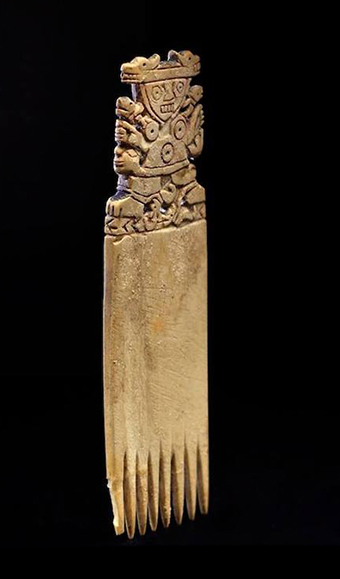
It might have been used to weave textiles like this mantle border fragment of funerary cloth with anthropomorphic feline figures from the Krannert Art Museum, or this textile fragment with the design of stylized birds and humans from LACMA.
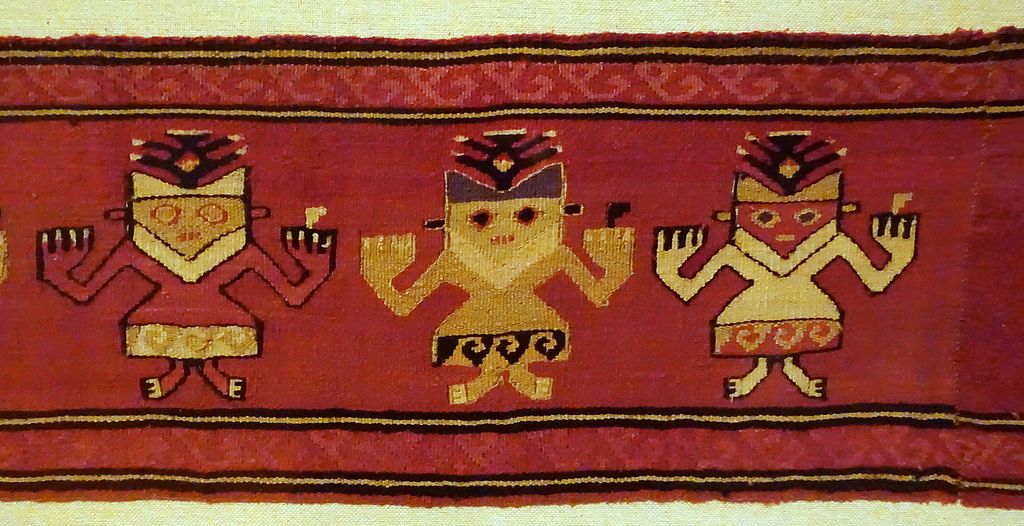
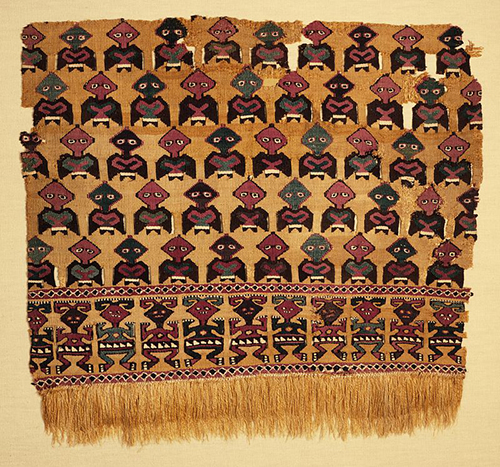
Four other combs from the KF Comb Research Project come from Chimú culture, 900-1470 AD, when they were conquered by the Incas.

© KF Comb Research Project, Chimú Peru, c. 1250-1450, Wood with traces of white polychromy, H: 14 cm.
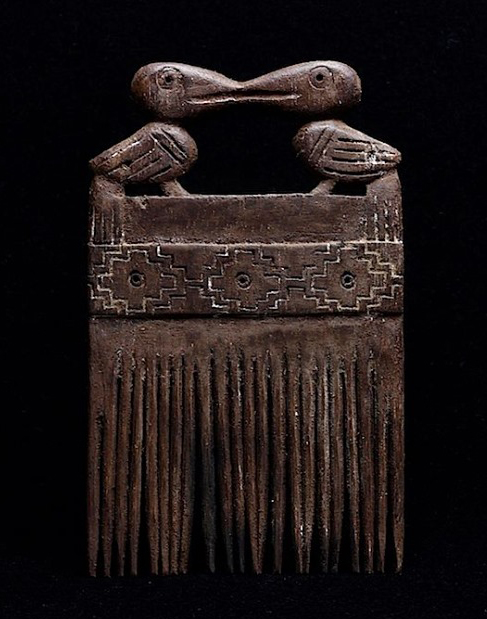
© KF Comb Research Project, Chimú Peru, c. 1100-1470, Wood with traces of white pigment, H: 12 cm.

© KF Comb Research Project, Chimú Peru, c. 11-14 Century, Wood with traces of white pigment, H: 15 cm.
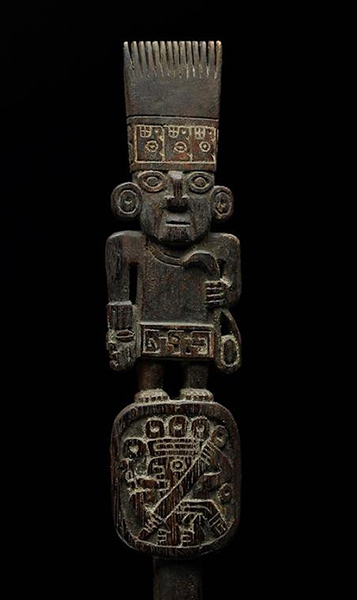
© KF Comb Research Project, Chimú Culture Peru, c. 1250-1450 AD, Large hairpin with a comb on the top. H: 38.5 cm., carved wood, traces of polychromy.
These combs might have been ornamental or used to make a textile like this:
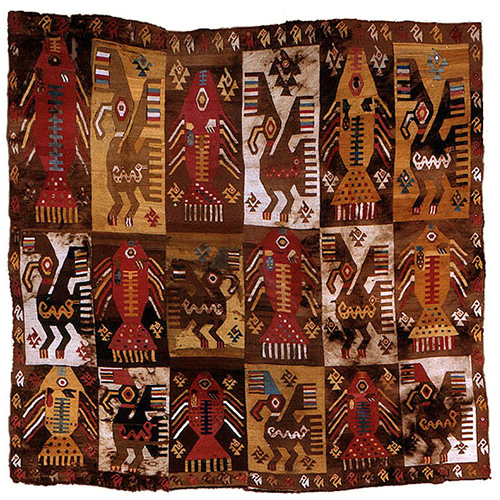
This is the prize. Look at how the fabric was preserved and the brightness of the colors. Cactus Wari combs were used for weaving, but the actual purpose of larger wooden combs like this one remains unclear. They are too coarse to be used for effective combing. It is thought they were exclusively produced for funerals, as a part of selection of items mumified with the body.
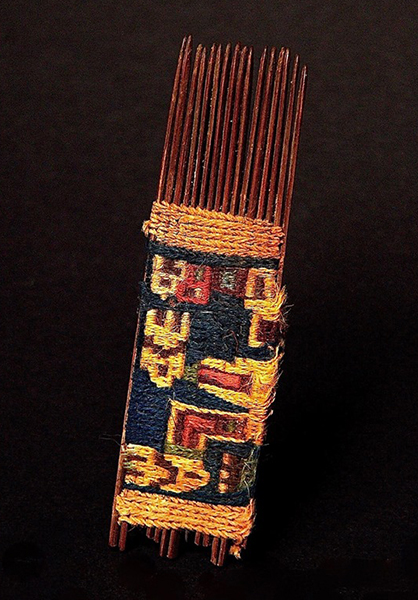
© KF Comb Research Project, Nazca/Wari Culture Peru, c. 500-1000 AD, Made of cactus spines and colored wool thread, H: 15 cm.
That these combs survived and are with a collector who values them because he knows what they are is a miracle.
